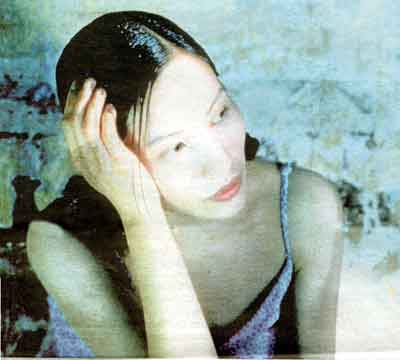David Stratton (The Weekend Australian)
![]()
![]()
![]()
![]()
Tran Anh Hung is the best-known Vietnamese director on the international film scene, though he's lived most of his life in Paris. His first film, the exquisite The Scent of Green Papaya (1993), was set in a 1950s Saigon completely recreated in a French film studio, but he returned to the place of his birth to make the abrasive Cyclo (1995) on location in what is now called Ho Chi Minh City. These two films provided utterly different views of Vietnam: the first, a nostalgic examination of a peaceful, well-ordered life before the war; the second, an apocalyptic postwar vision of violence and destruction.
For his third film, The Vertical Ray of the Sun, Tran has made his first film set in Hanoi. It's a contemporary piece about the lives of three sisters but it's also a beautifully filmed meditation on the very human need to keep up appearances. Delicate and simple in the best senses of those words, the film may be very specifically Vietnamese in its detail but, like the best movies from any source, its characters and themes have universal application. It's the fact that these characters and their concerns are so recognisable that makes the film so touching and memorable.
 |
Suong (Nguyen Nhu Quynh) is the eldest of the three sisters; she runs a restaurant in the city and employs her youngest sister, 23-year-old Lien (Tran Nu Yen Khe), as a waitress. The middle sister, Khanh (Le Khanh), who is newly pregant, is happily married. In an early scene, the three siblings and their brother Hai (Ngo Quang Hai) get together for a ceremony to mark the anniversary of the death of their mother. It's an important sequence in which Tran indicates how apparently close the sisters are to one another; they exchange details about their lives, they seek advice from one another. But this complicity proves to exist only on the surface. In fact, each sister has a secret that she withholds from the others. |
The film covers a period of a few weeks, during which time the relationships undergo upheaval and renewal. In other hands, and in another culture, these situations might have been the stuff of soap opera, but Tran's seemingly effortless style imbues the material with an entrancingly light and delicate touch.
One of the film's main assets is the way it looks. Mark Lee's camera work, mostly confined to interiors - the restaurant, the apartments - is nothing less than sublime, the colours rich and extremely beautiful, seductive even. The film evocatively reflects the slower, gentler way of life in Hanoi as compared to the former Saigon, something Tran describes as the northern city's sweetness.
The film, which is accompanied by lovely, low-key music, also incorporates some English-language songs, including tracks by Lou Reed and the Velvet Underground. By any title, this is a lovely film which, though French-financed, is a rich addition to the culture of the still relatively unknown (in the West) cinema of Vietnam. It's a fine addition to the essential Silk Screen series.